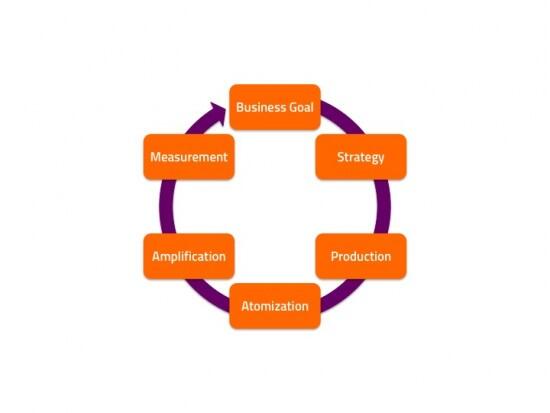Now that it’s a “thing,” we have a tendency to overcomplicate content marketing. Not coincidentally, this was also the case when websites became a “thing” as well as when email, and SEO and social media got hot. Probably even butter churning, when that first went viral (or whatever passed for viral in feudal Europe). But I have one piece of advice that will serve you well as new technology and marketing trends capture our imagination:
People who make things more complex than they are either know less than they think, or are trying to sell you something
There are certainly people and organizations in social media and content marketing that are living proof of that principle, and one of my deepest desires for Convince & Convert as a blog and as a consultancy is to not be among them. Our unofficial motto is “Uncommon advice without the hype.” In that spirit, I wanted to spend a few minutes with you today talking about how content marketing gets made.
Of course, there are at least as many types of content marketing as there are squirrels in my yard, and as I type this I can see 17 squirrels. So there’s that. At the execution level there are indeed myriad ways you can “make” and deploy content that works. However,the process that companies undergo to plan, create and measure content is (or should be) mostly static and consistent.
Here’s the six step process we use for content marketing plans here at Convince & Convert. Perhaps it’ll help you see through the smokescreen of obfuscation that is starting to creep into the content marketing field.

1. Business Goals

1. Business Goals
Now that it’s hot, far too many companies are creating content just to be able to check that box on their marketing tactics chart. “Let’s do content marketing” is replacing “let’s do social media” and “let’s try to go viral” as the most commonly heard – yet utterly rudderless – corporate mandate. Content can serve different purposes within a company, and the best content marketing programs define the role of content beforehand, not after the fact.
2. Strategy
What is this specific aim of this particular content execution? For which audience is it intended? At what stage of the purchase funnel? What is the key question or need that this content fulfills? How do we know that this need exists (social listening, search engine keyword analysis, customer feedback, etc.).
3. Production
What form should this content optimally take, recognizing that in many cases there isn’t a right and wrong way to do content, just a way that is more right based on your audience and their information consumption preferences. This is where you get to figure out what you’re making, who is making it, and when.
4. Atomization
Too often, content marketers attempt to reinvent the wheel instead of just chumming more bodies of water with a content tentpole they already possess. This is content atomization – taking one big idea and making many smaller content executions from it. My favorite example of content atomization in practice is this Fix In Six program from Lowe’s.
5. Amplification
You must market your marketing. The notion that you can simply create interesting content and people will magically find it is a lie. If you build it, they won’t necessarily come. You have to treat your content executions like a product, and launch them the same way you would a product. I employed dozens of integrated tactics to launch my book Youtility last year, instead of relying on Amazon and this blog to generate sufficient awareness. (for a related ebook on my 25 Secrets About How I Wrote and Marketed a New York Times Bestseller, check this out).
6. Measurement
Content isn’t inexpensive. It’s just different expensive. The time required (and in some cases, the production costs) can be significant. Some day, someone in your company is going to ask “hey, is all that content actually making us any money?” The best content programs are those that are measured, because the data gathered can be used to optimize the content next time. Here’s an ebook I wrote with Content Marketing Institute called “A Field Guide to the 4 Types of Content Marketing Metrics.” If you haven’t seen it, you should grab it. A couple of notes on measurement in general:
You may not be able to measure content’s impact on transactions, per se. But, if you are wise about survey research you can isolate content’s impact on preference and sales that way. For example, this remarkable program from McDonald’s Canada has been found to have increased Canadians’ trust of McDonald’s food quality by nearly 10 percent. That’s an enormous impact that shows up in surveys, but cannot be neatly measured in-store.
Also, make sure you have fully thought through your measurement narrative BEFORE you produce your content. You need to bake trackability into the content wherever possible, and if you don’t do that at the beginning you end up with a patchwork mathematical mess. Remember this:
To view the original article Click HereTrying to measure content after it’s made is like trying to pinstripe a car once it’s moving.

No comments:
Post a Comment